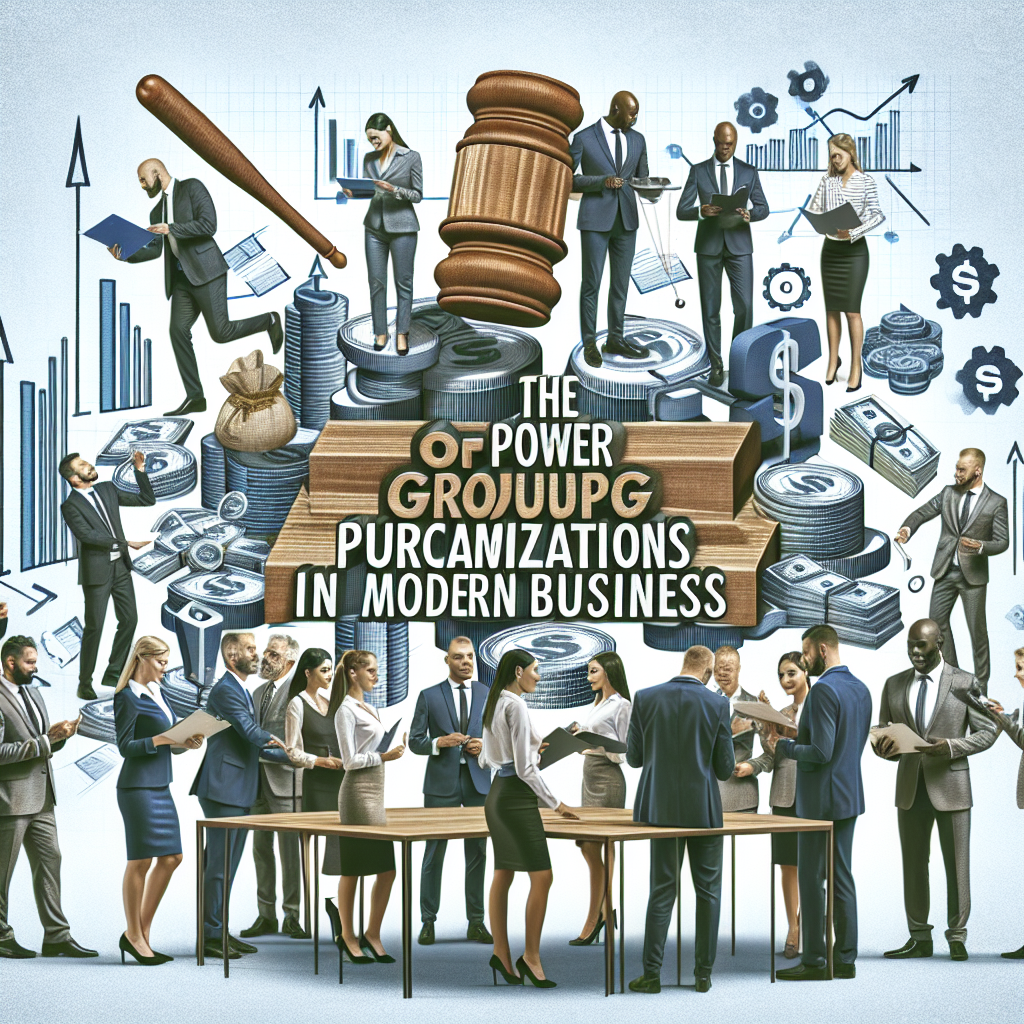Introduction
Supplier Lifecycle Management (SLM) is a strategic approach to managing supplier relationships throughout their entire lifecycle, from identification to offboarding. This process is vital in modern procurement practices, as it enhances collaboration, reduces risks, and improves overall supplier performance.
Key aspects of SLM include:
- Supplier identification: Finding potential suppliers that align with organizational goals.
- Supplier evaluation: Assessing suppliers based on quality, reliability, and financial stability.
- Performance management: Continuously monitoring and optimizing supplier contributions.
In this blog, you will discover the various stages of the SLM process. We will discuss best practices for effectively managing suppliers throughout their lifecycle, ensuring that your organization maximizes value and maintains strong supplier relationships.
Additionally, understanding how to maximize federal grant funding for nonprofits can also play a crucial role in supplier management by providing necessary financial resources.
Moreover, ensuring that your employees are well-equipped and motivated is essential for optimal performance management. This could involve boosting employee morale with break room supplies, which can lead to improved productivity and better supplier contributions.
Lastly, in certain sectors such as healthcare, it’s important to consider essential PPE for airborne precautions, which can be a critical factor when evaluating suppliers in those fields.
Understanding Supplier Lifecycle Management
The Supplier Lifecycle Management (SLM) process involves a series of structured steps designed to optimize supplier relationships and improve procurement efficiency. The key components of the SLM process are:
- Supplier Identification: Recognizing potential suppliers that align with your organization’s values and operational needs.
- Supplier Evaluation: Assessing suppliers based on criteria such as quality, reliability, and financial stability.
- Onboarding: Integrating new suppliers through contract negotiation and compliance checks.
- Performance Management: Establishing Key Performance Indicators (KPIs) to continuously monitor supplier performance.
- Risk Management: Identifying and mitigating risks associated with suppliers throughout their lifecycle.
- Supplier Relationship Management (SRM): Building collaborative relationships that foster innovation and resilience. This aspect is crucial for tail spend management, which focuses on optimizing the less significant portions of spending that can often be overlooked.
- Offboarding: Ensuring smooth transitions when terminating contracts with non-compliant or underperforming suppliers.
Adopting a comprehensive approach to supplier management is crucial for organizations seeking to enhance operational efficiency. A well-defined SLM process not only improves supplier performance but also drives cost savings and reduces risks. By effectively managing the supplier lifecycle, organizations can:
- Leverage strategic partnerships
- Access innovative solutions
- Boost their competitive advantage in the market
It’s also vital to consider the top trends in supplier innovation when establishing these partnerships, as they can provide valuable insights into potential areas for improvement and growth. Furthermore, incorporating principles of diversity, equity, and inclusion (DEI) in the supplier selection process can lead to more robust and diverse supply chains.
The Stages of Supplier Lifecycle Management
1. Supplier Identification and Evaluation
The initial stage of Supplier Lifecycle Management (SLM) focuses on supplier identification and evaluation, essential steps for aligning potential suppliers with organizational values and requirements. A well-structured approach ensures that you can select suppliers who can meet your needs effectively.
Criteria for Identifying Potential Suppliers
Identifying potential suppliers involves several key criteria, including:
- Alignment with Organizational Values: Assess whether the supplier shares similar ethical standards, sustainability practices, and corporate social responsibility commitments.
- Industry Experience: Evaluate their experience within your specific industry to gauge their understanding of unique challenges and requirements.
- Capacity and Capability: Determine if the supplier has the necessary resources—such as technology, personnel, and infrastructure—to fulfill your demands consistently.
Methods for Evaluating Suppliers
Once you have identified potential suppliers, evaluation becomes critical. Use predefined criteria to assess their suitability systematically:
- Quality Assurance Processes: Examine the supplier’s quality control measures. Look for certifications like ISO 9001 that indicate a commitment to maintaining high standards.
- Reliability: Investigate delivery timelines, past performance records, and customer testimonials to gauge reliability.
- Financial Stability: Review financial statements or credit reports to assess the supplier’s fiscal health. A financially stable supplier is less likely to encounter disruptions that could impact your operations.
A combination of qualitative assessments and quantitative metrics aids in making informed decisions. Tools like scorecards can be beneficial in ranking potential suppliers based on these criteria.
Effective supplier identification and evaluation not only streamline procurement processes but also establish a strong foundation for further stages in the SLM process. Engaging in these practices helps mitigate risks associated with poor supplier choices while enhancing overall supply chain efficiency.
2. Supplier Selection
Selecting suitable suppliers is a critical phase in the Supplier Lifecycle Management (SLM) process. A structured evaluation process ensures that organizations make informed decisions, optimizing their supplier base.
Key Considerations for Supplier Selection:
- Evaluation Criteria: Establish specific metrics to gauge potential suppliers. These may include:
- Compliance with quality standards
- Financial stability
- Reliability and delivery performance
- Data Analytics Role: Leverage data analytics tools to enhance decision-making. By analyzing historical performance data and market trends, you can identify patterns that indicate a supplier’s capability to meet your organizational needs.
Structured Evaluation Process:
- Define Requirements: Clearly outline what you require from suppliers based on your organizational values and project specifications.
- Gather Data: Collect relevant information about potential suppliers, including their track record, certifications, and capabilities.
- Score Suppliers: Apply a scoring system against your predefined criteria to rank suppliers objectively.
- Shortlist Candidates: Focus on the top performers who align closely with your requirements, setting the stage for onboarding and performance management.
This methodical approach reduces risks associated with supplier onboarding and enhances the overall effectiveness of the SLM process.
3. Onboarding
Onboarding is a critical stage in the Supplier Lifecycle Management (SLM) process. It sets the foundation for a productive relationship with new suppliers. Effective onboarding involves several key steps:
1. Contract Negotiation
Engage in discussions to finalize terms that benefit both your organization and the supplier. This includes pricing, delivery schedules, and quality standards. Establishing clear expectations early on helps prevent misunderstandings later.
2. Compliance Verification
Ensure that potential suppliers meet all legal and regulatory requirements before they start providing goods or services. This includes checking certifications, licenses, and adherence to industry standards.
The significance of compliance during onboarding cannot be underestimated. Non-compliance can lead to legal repercussions and disrupt supply chain operations. By verifying compliance upfront, you mitigate risks associated with supplier performance management down the line. This is where compliance-driven sourcing comes into play, offering benefits such as enhanced reputation, reduced risks, and alignment with ethical standards.
A structured onboarding process not only enhances supplier integration but also aligns with your organization’s values and requirements established during the identification phase. This careful approach fosters strong partnerships and sets the stage for effective performance monitoring as the relationship evolves through its lifecycle.
4. Performance Management
Establishing Key Performance Indicators (KPIs) is crucial in measuring supplier performance throughout the Supplier Lifecycle Management (SLM) process. KPIs provide clear benchmarks against which suppliers can be evaluated, ensuring alignment with organizational goals and standards. Common KPIs include:
- Quality of Goods/Services: Measures defect rates and adherence to specifications.
- Delivery Timeliness: Assesses on-time delivery percentages.
- Cost Management: Evaluates pricing competitiveness and cost control.
Monitoring supplier performance requires ongoing evaluation techniques that help maintain high standards. Implement regular audits to assess compliance with contractual obligations, ensuring suppliers meet quality and service expectations. Feedback mechanisms are essential; they allow for continuous improvement through:
- Supplier Reviews: Conduct periodic reviews to discuss performance metrics, addressing any issues proactively.
- Surveys: Gather insights from stakeholders who interact with suppliers to gain comprehensive feedback.
These strategies form a robust framework for managing supplier performance effectively. By following these guidelines, organizations can maximize supplier performance, ensuring both quality and reliability as highlighted in this comprehensive guide. Through diligent monitoring and evaluation, organizations can foster stronger relationships with suppliers while enhancing operational efficiency within the SLM process.
5. Risk Management
Effective risk management is essential throughout the supplier lifecycle management (SLM) process. It involves a proactive approach to identifying potential risks associated with suppliers, which can arise during various stages such as supplier identification, onboarding, and performance management. Common risks include:
- Financial instability: Suppliers facing financial difficulties may jeopardize your supply chain.
- Geopolitical factors: Changes in regulations or political climates can impact supplier operations.
To address these risks, organizations should implement robust mitigation strategies, including:
- Contingency planning: Develop alternative plans to ensure continuity of supply if a risk materializes. This might involve maintaining relationships with multiple suppliers for critical materials.
- Diversification of the supplier base: Engaging a variety of suppliers can reduce dependency on a single source, thus minimizing vulnerability.
Regular assessments of suppliers against established evaluation criteria are crucial. This ensures any emerging risks are identified early and addressed before they affect operations. By prioritizing risk management within the SLM framework, organizations can enhance resilience and maintain robust supply chains.
6. Supplier Relationship Management (SRM)
Supplier Relationship Management (SRM) is a crucial part of the Supplier Lifecycle Management (SLM) process. Effective communication and collaboration are key to building strong relationships with suppliers, which in turn creates value for both parties. Here are some important things to keep in mind:
1. Open Lines of Communication
Establishing clear channels for dialogue ensures that both parties can address issues promptly, share feedback, and discuss innovations. It’s essential to avoid common procurement terms that can hinder effective communication.
2. Collaborative Problem Solving
Working together to solve problems builds trust and strengthens the partnership.
The benefits of nurturing strategic partnerships with key suppliers include:
- Access to Innovation: Engaging closely with suppliers often leads to new ideas and solutions that can enhance product offerings or improve operational efficiencies.
- Improved Supply Chain Resilience: Strong relationships allow organizations to respond more effectively to disruptions, leveraging supplier insights for effective contingency planning. This aspect is particularly important in times of crisis when building resilience in procurement becomes crucial.
Investing time and resources into SRM not only enhances supplier identification, onboarding, and performance management but also creates a more agile supply chain capable of adapting to market changes. A robust SRM strategy ensures that your organization remains competitive while building a sustainable network of reliable partners. Additionally, incorporating elements of strategic sourcing and category management into your SRM approach can further optimize supplier relationships and drive value.
7. Offboarding
Effective offboarding is crucial in the Supplier Lifecycle Management (SLM) process. Terminating contracts with underperforming or non-compliant suppliers requires a structured approach to minimize disruption. Key best practices include:
- Clear Communication: Inform the supplier of the decision promptly and provide reasons for termination. This transparency helps maintain professionalism.
- Document Everything: Keep detailed records of performance issues and communications. This documentation can be vital for future evaluations and legal considerations.
- Evaluate Transition Plans: Develop a comprehensive strategy for transitioning to alternative suppliers. Identify potential suppliers early during the offboarding process to ensure continuity.
To ensure a smooth transition:
- Engage New Suppliers Early: Involve new suppliers in discussions before the termination of existing contracts, allowing them to prepare adequately.
- Transfer Knowledge: Share relevant information about the previous supplier’s operations with the new supplier to avoid operational hiccups.
- Monitor Progress: Establish checkpoints during the transition period to address any issues that may arise, ensuring alignment with organizational goals.
Implementing these strategies enhances supplier lifecycle management while safeguarding business operations against potential disruptions during transitions. Additionally, succeeding with limited resources can also play a significant role in managing offboarding effectively, by optimizing processes and leveraging networks for smoother transitions.
Benefits and Challenges of Implementing Effective Supplier Lifecycle Management Practices
Implementing effective Supplier Lifecycle Management (SLM) practices offers a range of benefits that can significantly enhance an organization’s procurement processes. Key advantages include:
- Improved Performance: Streamlined supplier evaluations lead to stronger partnerships and enhanced supplier performance, enabling organizations to meet their strategic objectives more effectively.
- Cost Savings: By optimizing supplier selection and negotiation processes, organizations can achieve substantial cost reductions. This includes access to better pricing, reduced procurement expenses, and enhanced budget management. For instance, leveraging collective spend through group purchasing organizations (GPOs) can result in significant savings. Moreover, effective sourcing strategies not only apply to procurement but can also be beneficial in hiring top talent.
- Data Quality: Robust SLM practices ensure high-quality data collection and analysis. Accurate data on supplier performance aids in making informed decisions, ultimately improving operational efficiency.
- Technology Integration: Leveraging technology solutions, such as automation tools and data analytics platforms, enhances the SLM process by facilitating real-time insights and reducing manual workloads.
Despite these benefits, organizations may encounter several challenges during SLM implementation:
- Resistance to Change: Employees may resist new processes or technologies. To address this, it is crucial to provide training and communicate the benefits clearly.
- Data Management Issues: Poor data quality can hinder decision-making. Establishing strict data governance policies can mitigate these issues.
- Integration with Existing Systems: Integrating new SLM tools with legacy systems can be complex. Engaging IT specialists early in the process ensures smoother transitions.
- Resource Allocation: Limited resources may impede effective SLM practices. Prioritizing key initiatives and securing executive support can help allocate necessary resources effectively.
By recognizing both the benefits and challenges of SLM implementation, organizations can develop strategies to maximize their procurement efficiency while minimizing potential obstacles. Emphasizing on the art of frugal living could also provide insights into how to manage resources effectively during this transition period.
Best Practices for Successful Supplier Lifecycle Management
Developing a robust supplier strategy requires a comprehensive approach that covers all stages of the Supplier Lifecycle Management (SLM) process. Here are key recommendations to enhance your supplier management:
1. Define Clear Objectives
Establish specific goals for supplier performance, compliance, and risk management. This clarity guides your SLM efforts and aligns them with organizational objectives.
2. Create a Supplier Evaluation Framework
Develop criteria to assess potential suppliers consistently. This framework should account for quality, reliability, and financial stability, ensuring alignment with your values and requirements.
3. Implement Onboarding Protocols
Design structured onboarding processes that include contract negotiation and compliance verification. This is crucial for fostering strong relationships from the outset.
4. Establish Key Performance Indicators (KPIs)
Use KPIs to measure supplier performance against agreed standards. Regularly review these metrics to ensure suppliers meet expectations.
Leveraging technology solutions can significantly streamline SLM activities:
5. Adopt Automation Tools
Automation can simplify tasks such as data entry, document management, and compliance tracking. This reduces manual errors and frees up resources for strategic initiatives.
6. Utilize Data Analytics Platforms
Advanced analytics provide insights into supplier performance trends and risks. These insights empower informed decision-making throughout the lifecycle.
By integrating these practices into your supplier strategy, you can achieve enhanced efficiency, foster stronger relationships, and drive value creation within your supply chain operations.
Case Study: Hubzone Depot LLC’s Success Story in Public Sector Procurement
Hubzone Depot LLC is a great example of how effective Supplier Lifecycle Management (SLM) principles can be applied in the public sector market. Founded by Jessica S. Presco, this HUBZone certified business and Women’s Business Enterprise (WBE) demonstrates how strategic supplier management can improve operational efficiency and competitiveness.
Key Practices Aligned with Industry Standards:
1. Supplier Evaluation and Selection
Hubzone Depot uses structured evaluation processes to identify suppliers that align with their organizational values. This ensures quality and reliability in their offerings.
2. Onboarding and Compliance
The company places a strong emphasis on compliance verification during the onboarding process, ensuring that legal requirements are met while also building strong relationships with suppliers.
3. Performance Management
By establishing clear Key Performance Indicators (KPIs), Hubzone Depot continuously monitors supplier performance to ensure that it meets predetermined standards.
Impact of Certifications:
The HUBZone certification not only enhances Hubzone Depot’s credibility but also opens doors to exclusive government contracts. Their WBE certification further positions them favorably in procurement initiatives aimed at promoting diversity and inclusion within supply chains.
By leveraging these certifications, Hubzone Depot has managed to secure millions in savings for U.S. organizations while offering competitive pricing and personalized support. Their commitment to transparency and best-in-class service integrity ensures that clients receive optimal value without compromising on quality.
Through these practices, Hubzone Depot LLC demonstrates how effective supplier lifecycle management can drive success in public sector procurement, setting a benchmark for other businesses seeking similar achievements.
As they continue to optimize their operations through procurement optimization, they also provide valuable resources for individuals aspiring to enter the field. Their insights into entry-level procurement jobs offer a solid starting point for those looking to kickstart their career in supply chain management.
Furthermore, the company’s emphasis on continuous learning is reflected in their purchasing process, which serves as a transformative journey for many professionals like Frank Corris who have mastered procurement through learning and adaptation.
For those interested in specialized roles such as a procurement engineer, Hubzone Depot also provides valuable insights into salary trends and expectations for 2025.
Lastly, they share practical advice on managing a one-person procurement function, optimizing cost efficiency and supplier management for small-scale operations.
Conclusion: Embracing the Future of Supplier Lifecycle Management
Supplier Lifecycle Management (SLM) is crucial for organizations aiming for long-term success. By implementing best practices in SLM, businesses can expect:
- Enhanced supplier performance
- Cost savings opportunities
- Improved compliance and risk management
As we look ahead, it’s clear that technology integration, data analytics, and sustainability will play significant roles in shaping supplier management. To stay competitive, organizations must proactively adapt to these trends.
One effective strategy to improve your supplier management is by leveraging purchasing groups. This approach can lead to better negotiation power and cost savings.
Now is the time to take action. Apply the key insights from this blog post into your procurement strategies. Here are some practical steps you can follow:
- Develop robust processes throughout the supplier lifecycle.
- Engage with suppliers meaningfully.
- Leverage tools that streamline your operations.
By prioritizing effective SLM, you empower your organization to thrive in a competitive landscape. This, in turn, fosters lasting relationships with suppliers and drives mutual value creation.





